It should be taken to a hazardous waste facility, as it’s classified as hazardous waste and shouldn’t be thrown in regular trash. It’s also important to avoid pouring it down the drain to prevent environmental contamination.
A well-groomed nail bed can serve as a means of self-expression or self-care. In fact, recent years have seen an increase in nail polish sales, indicating the importance of this activity in our daily cosmetic regimen. However, if you regularly paint your nails, you might not have given much thought to what you are actually putting on your body or the effects on the environment.
Traditional nail polish cannot be disposed of properly, much less recycled, as it is considered toxic and flammable. Because of this, the EPA classifies it as household hazardous waste.
Nail polish is hazardous to the environment and should be properly discarded. The most effective way on how to dispose of nail polish is to take it back to the salon where you purchased it, or bring it to a nail polish recycling center.
However, if this approach is not viable, there are other ways you can safely dispose of your old nail polish product. In this article we will guide you to dispose of fingernail polish without harming the environment!
Key Takeaways
- Nail polish is considered hazardous due to its chemical composition.
- Regular trash disposal for nail polish is not advisable.
- Pouring nail polish down drains is harmful to the environment.
- Specialized hazardous waste facilities are the proper disposal sites.
- Adhering to local disposal regulations is crucial for environmental safety.
Table of Contents
Nail Polish
Nail polish is a lacquer to decorate fingernails and toenails while also protecting the nail plates. Although it makes your nails gorgeous, nail polish is made of plastic and chemicals. Some of these harmful substances have been linked to cancer, endocrine system disruption, and disruption of fertility.
Besides, if you dispose of fingernail polish, these chemicals also may harm the environment. Let us explain in more detail to give you better understanding.
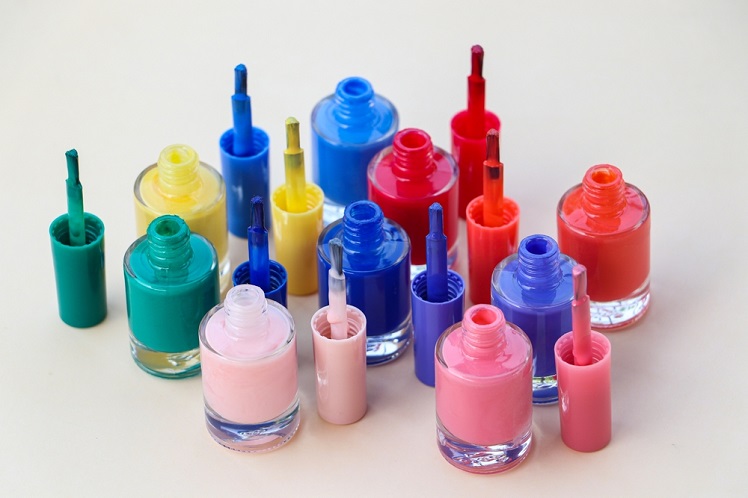
1. What is Nail Polish Made of?
Nail polish is a kind of lacquer that is applied to fingernails and toenails to add color and flair. Nail polish comprises a variety of ingredients since it needs to be durable, flexible, and resist chipping and peeling. Here is a look at the chemical make-up of nail polish and how each component works!
Solvents
Solvents are liquids that are utilized to blend other materials. To produce a homogeneous nail polish, solvents are frequently the initial ingredient in nail polish. The solvents disappear after the polish is applied. The quantity and kind of solvent used determine the thickness and drying time of a polish. Alcohol, butyl acetate, and ethyl acetate are a few examples of solvents.
Film Formers
Chemicals called “film formers” are what give a coat of nail polish its flat surface. Nitrocellulose is the most often used film formers.
Resins
Resins are substances that give the film of nail polish depth, shine, and hardness. Resins make the film stick to the nail bed. Tosylamide-formaldehyde resin is an illustration of a polymer used as a resin in nail polish.
Plasticizers
Plasticizers make a brittle lacquer. They work by attaching to polymer chains and extending the space between them to help keep polish flexible and less likely to chip or crack. A popular plasticizer is camphor.
Pigments
Pigments give nail polish its color. The chemical pigments that can be utilized in nail polish are incredibly diverse. Iron oxides and other colorants, such those in paint or varnish, are examples of common pigments.
Pearls
Pearlescent minerals, such as titanium dioxide or crushed mica, may be present in nail paint that provides a shimmering or sparkly effect. Some polishes could use plastic glitter pieces or additional ingredients to create a unique appearance.
2. Harmful Chemical in Nail Polish
The ingredient list for your favorite nail polish has a number of unclear chemical names. It is crucial to understand which of these substances might be harmful to humans. Let’s talk about the “Toxic Trio”, which can be dangerous components in nail paint!
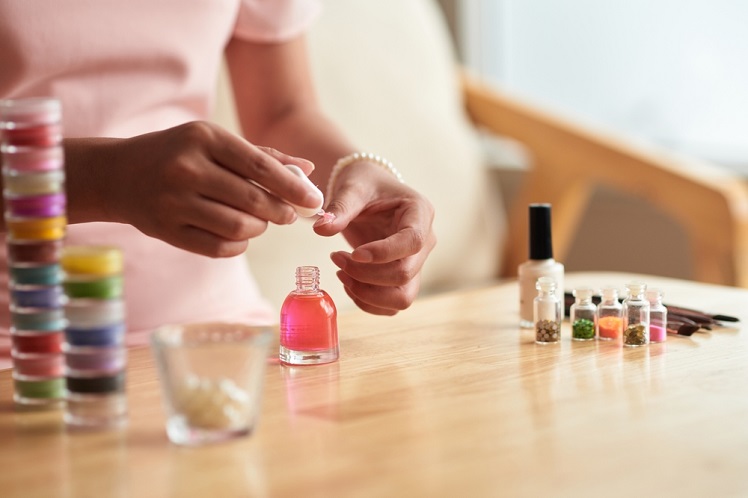
Formaldehyde
The International Agency for Research on Cancer has classified formaldehyde as a carcinogen and connected it to lung and nasal cancers. It is frequently employed as an embalmer, sterilizer, and preservative. This substance is included in nail polishes, which are also referred to as “nail hardeners”.
Dibutyl Phthalate (DBP)
DPB makes nail paint more flexible and less prone to chips, cracks, and other annoyances. However, because of its connection to reproductive problems, this substance has been outlawed throughout Europe. Many women decide not to use it, even though it is still permitted in the US.
Toluene
At low levels of exposure, toluene causes a variety of neurological and reproductive problems. It causes symptoms including fatigue, forgetfulness, and memory loss and is harmful to the nervous system and the skin. Inhaling it can also cause headaches, nausea, and dizziness.
3. What Does Using Expired Nail Polish Do?
Nail polish doesn’t “expire” in the sense that it spoils or becomes dangerous after being used. Unopened polishes have a shelf life of up to 5-8 years, whereas opened polishes have a lifespan of up to 2 years. However, if you find that your nail polish becomes thick, gloopy, and dry, then it’s a sign to dispose of it and get a new one.
The reason is simply because your expired nail polish product will be difficult to use.
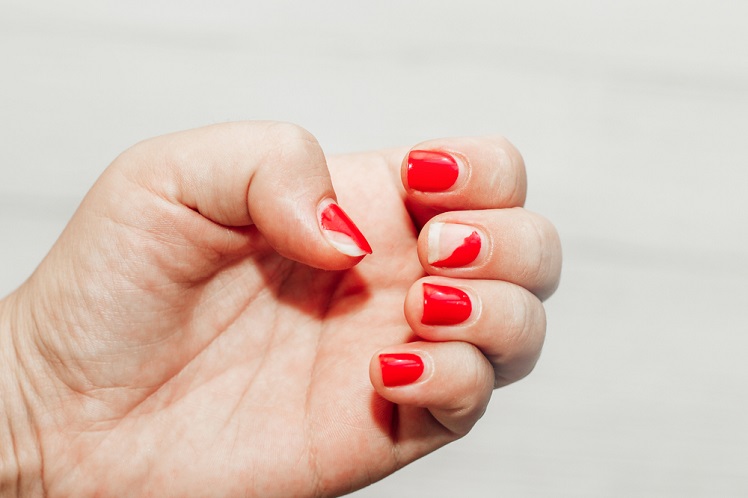
In addition, you may also find the expired nail polish separated if it wasn’t used for a long time. Nail polish that has been separated will never be able to be suitably re-mixed to come back together effectively, which means that they won’t function properly in terms of dry time, coverage, concentration of color, or sparkle.
Furthermore, your old nail polish’s color or smell may change, indicating a chemical reaction in the product. Your bottles’ expiration time may be accelerated by exposing them to actual temperatures. However, with proper storage, nail polish can last for a long time.
According to the former Licensed Master Nail Tech, Jessica Lyne’s experience, she mentioned that among hundreds of nail paint bottles they have, some of which are more than 20 years old and are still in good condition due to the right storage.
4. How Many Nail Polish We are Using?
At the point of disposal, bottles contained an average of 7.2g of nail polish according to study from University of Southampton. The end-of-use products produce only little amounts of residues and packaging, but the overall effects could be rather significant.
It was obvious that end-of-use products were disposed of with regular home trash, contaminating non-hazardous waste treatment and failing to salvage the materials that were lost.
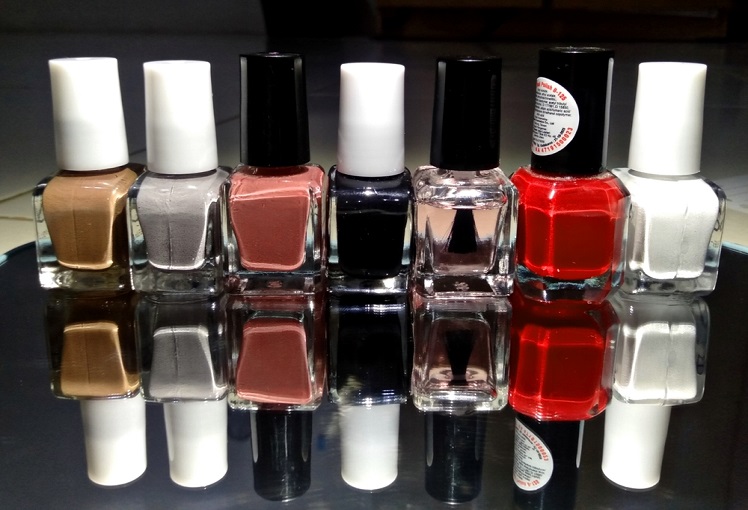
Moreover, data from the United States Census and the Simmons National Consumer Survey (NHCS) mentioned that 117.34 million Americans used nail polish or other nail care items in 2016. Thus, there will be more than 840 tonnes of nail polish waste disposal annually if each person discards one bottle.
5. Are Nail Polishes Recyclable?
Yes, you can recycle your nail polish. Because nail polish is considered toxic on the ground, you can recycle them to companies that recycle nail polish such as Chemwise.
Nothing should prohibit the bottle from being recycled after the contents have been used up and rinsed to remove any remaining nail paint. This is a great way to dispose of your nail polish that won’t harm the environment.
Moreover, an initiative to develop a nail polish recycling program that will collect empty bottles from salons and dispose of them responsibly has been taken by distributor Louella Belle, which supplies to professionals. Based on disposal and recycling guidelines, the business collects the objects, sorts them into various materials, and then recycles or reuses those materials.
How Long Does Nail Polish Take to Decompose?
It’s critical to keep in mind that nail polish is made of plastic, and that if it chips off, microplastics may be released into the environment. Therefore, the time it takes for nail polish or microplastics to degrade can range from 20 years to 5 centuries.
Of course, given their smaller size and simpler decomposition process, microplastics are expected to degrade more quickly. However, still, they can be quite harmful over time if they are allowed to stay in contact with the environment.
Furthermore, nail polish materials that are not biodegradable never totally disappear. It’s because the “Toxic Trio” chemicals we’ve mentioned earlier are not biodegradable, which aren’t good for the environment.
Nail Polish Environmental Problems
Beyond the aesthetic value it gives to the nails, nail polish has certain negative environmental effects. We can’t ignore the impact nail polish has on the environment, even while getting a manicure or pedicure can be a source of relaxation for your mind and body.
Especially when you don’t know how to dispose of nail polish safely, here are some environmental problems that will happen you should know.
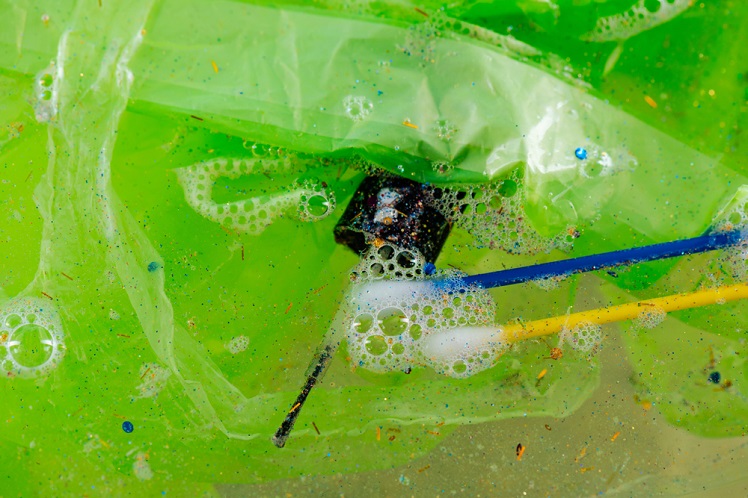
1. Toxic Landfill Problem
When nail polish is thrown away, it lies in landfills and leaks harmful substances like toluene, formaldehyde, and dibutyl phthalate into the ground and even water. These substances, sometimes referred to as the “Toxic Trio”, have numerous negative effects on health.
2. Microplastic from Glitter Nail Polish
In essence, glitter is a form of microplastic formed of etched aluminum and polyethylene terephthalate, both of which have been shown to have detrimental effects on the environment. Because they are composed of plastic and cannot be recycled, they do not biodegrade.
After contaminating land and water for a long time, they can seriously harm marine species and aquatic life.
3. Pollution In The Atmosphere
As nail polish packaging is also made of plastic, there is a possibility to pollute the atmosphere. When substances like plastics degrade in the environment, a variety of harmful chemicals are released into the atmosphere. That’s because plastics are constructed of a mix of compounds that will evaporate in extremely hot environments.
The Right Ways on How to Dispose Nail Polish
Throwing away nail polish is sometimes inevitable.However, because they are dangerous, explosive, and unquestionably harmful to the environment, we urge that you seek alternative methods of getting rid of your nail paint. Therefore, we have compiled some tips on how to dispose of nail polish safely.
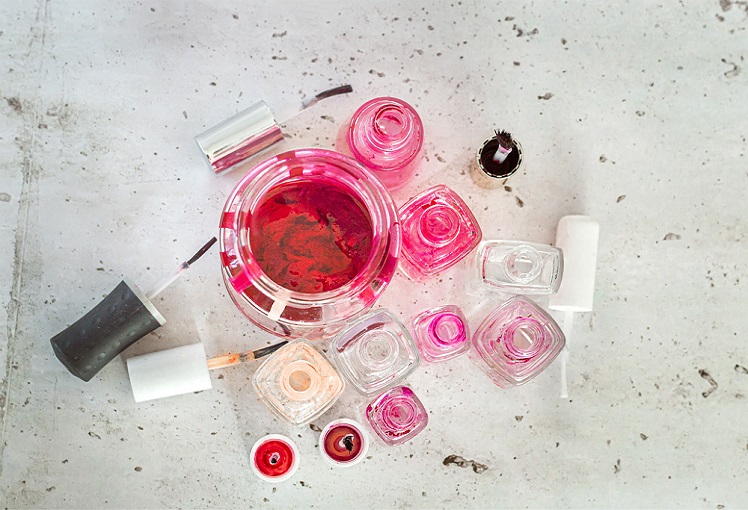
1. Re-purpose Your Old Nail Polish
If you still have half used the nail polish but no longer want to apply it on your nail, you can repurpose the item. For example, try mixing some colors to get a brand new color that you like. Or, you can use them to paint scratch items such as your shoes or bags. This is a smart way to dispose of your nail polish and make it useful.
2. Recycle Your Nail Polish Bottles
Old nail polish bottles can be dropped off at a recycling bin or picked up at the recycling facility. You might also try contacting a nail salon in your neighborhood to ask for advice on how to get rid of your old nail paint. It is crucial to properly and safely dispose of nail polish hazardous waste so there is no leach into the local water supply or the earth.
3. Donate Your Nail Polish
Find a donation facility nearby and give them a call to inquire if they will accept nail polish. Many folks would be delighted to use up your extra nail paint. If you can’t locate a donation facility that would accept your old nail paint, see if you can give it to your pals.
Nail Polish Environmentally Friendly Alternatives
You may be wondering if there are nail polishes that are environmentally friendly as you are aware of the effects that nail paints have on the environment. The good news is that environmentally friendly nail paints do exist! Here are some eco-friendly alternatives to get a beautiful nail without harming the environment!

1. Eco-friendly Nail Polish
Although there is no 100% zero waste nail polish product, we can choose the eco-friendly alternative such as Habit and Sienna nail lacquer varnish. They create vegan and environmentally friendly nail polish. They use a local, non-native weed wood to make the caps for their nail paint.
The non-toxic, vegan, and cruelty-free nail polish formulas are produced without the use of glitter or microplastics.
2. Bamboo Silica Based Nail Polish for Nail’s Health
This is also categorized as organic nail polish is a water-based nail polish made with natural ingredients. Unlike regular nail polish, bamboo silica nail polish does not contain chemicals. It has become popular in the last few years because of health concerns associated with regular nail polish.
For instance, Horizane nail polish is great for helping to strengthen the nails and increase their resistance to deterioration over time. Brittle nails can also be cured with it.
3. Vegan Nail Polish with Recycling Programs
Beside non-toxic and vegan claims, nail polish brands that offer recycling programs also can be a great alternative to the conventional one. For instance, Tenoverten, which has outlets in New York, Los Angeles, and Austin is a great example of an eco-friendly option.
Moreover, Tenoverten provides a selection of vegan, cruelty-free, and 8-free nail paint. Tenoverten and Chemwise have teamed up to recycle used nail polish bottles, including the plastic lids and brushes. If you bring any empty bottles to their salon, they will recycle them for you.
Final Thought
If you love the beauty of nail art in your manicure session, then you also should be responsible on how to dispose of nail polish after that. Please keep in mind that nail polish hazardous waste may harm the environment, despite its small size.
So, you have to dispose of them wisely to prevent a serious environmental issue in the future. Hopefully, this article will help you to handle the waste disposal and recycling as well as find a better alternative to conventional nail polish.
Latest Posts:
- Bioplastic Pros and Cons: An Unbiased Examination
- Eco-Friendly Bottling: Aluminum as the Sustainable Hero?
- How to Make Bioplastic from Rice: A Step-by-Step Guide
- Eco-Tips: How to Recycle Amazon Envelopes?
- What Does Compostable Mean?
FAQs (Frequently Asked Questions)
Why is nail polish hazardous?
Depending on the brand you use, nail polish might be poisonous and harmful for your nails due to chemicals on them. While some companies continue to manufacture their goods with dangerous chemicals, others have innovated to produce goods that are just as effective without them.
Check brands declare they’re “toxin-free”, “chemical-free”, or “natural”. Besides, they usually claim using recycled or sustainable packaging. If you are looking for eco-friendly nail polish, please refer to the article above.
Can you dump nail polish down the drain?
No. Never flush nail products down the toilet or into the sink. Your toilet and sink waste water is sent to a nearby treatment facility where it is often sterilized. Chemicals that are not intended to be in water in the first place cannot be filtered out by water treatment plants.
When should you throw away your nail polish?
After around two years, opened bottles should be thrown away. Meanwhile, nail polish have an unlimited shelf life when unopened. After a bottle is opened, some of the chemicals will evaporate, thickening and separating the polish.
Is nail polish remover hazardous waste?
Yes. Nail polish remover is regarded by the EPA as household hazardous waste. Besides the flammable risk, if inhaled over a prolonged period, can be harmful to the body. Polish removers may also result in the development of blisters, onycholysis, paronychia, allergic contact dermatitis, and brittleness.
